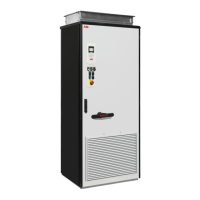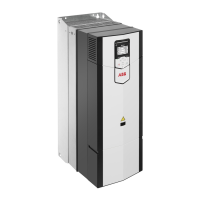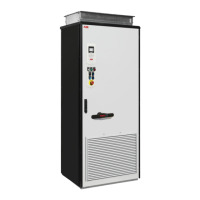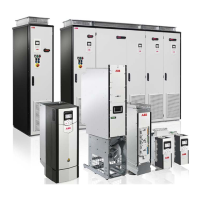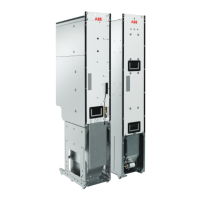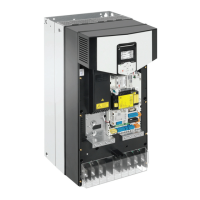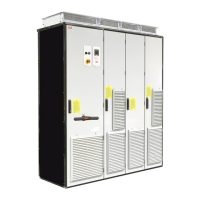Operation principle and hardware description 31
Line-side converter
The line-side converter rectifies three-phase AC current to direct current for the
intermediate DC link of the drive. The line-side converter is also capable of regenerating,
ie. feeding braking energy back into the electrical power network.
The following figure shows the simplified main circuit diagram of the line-side converter. In
R11, a ZCU control unit controls the line-side converter. See Overview of power and
control connections.
AC voltage and current waveforms
The AC current is sinusoidal at a unity power factor. The LCL filter suppresses the AC
voltage distortion and current harmonics. The high AC inductance smooths the line voltage
waveform distorted by the high-frequency switching of the converter. The capacitive
component of the filter effectively filters the high-frequency (over 1 kHz) harmonics.
Charging
Charging is needed to power up the DC link capacitors smoothly. Discharged capacitors
cannot be connected to the full supply voltage. The voltage must be increased gradually
until the capacitors are charged and ready for normal use. The drive contains a resistive
charging circuit consisting of contactor and charging resistors. The charging circuit is in
use after start-up until the DC voltage has risen to a predefined level.
Motor-side converter
The motor-side converter converts the DC back to AC that rotates the motor. It is also able
to feed the braking energy from a rotating motor back into the DC link. A ZCU control unit
controls the motor-side converter.
The control unit also controls the drive through the motor-side converter. In this manual,
the term drive control unit refers to the motor-side converter control unit. For the location of
the drive control unit, see Cabinet layout figures and Overview of power and control
connections.
1 Line contactor
2 LCL filter
3 Line-side converter
4 DC capacitors
5 DC link
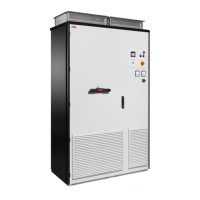
